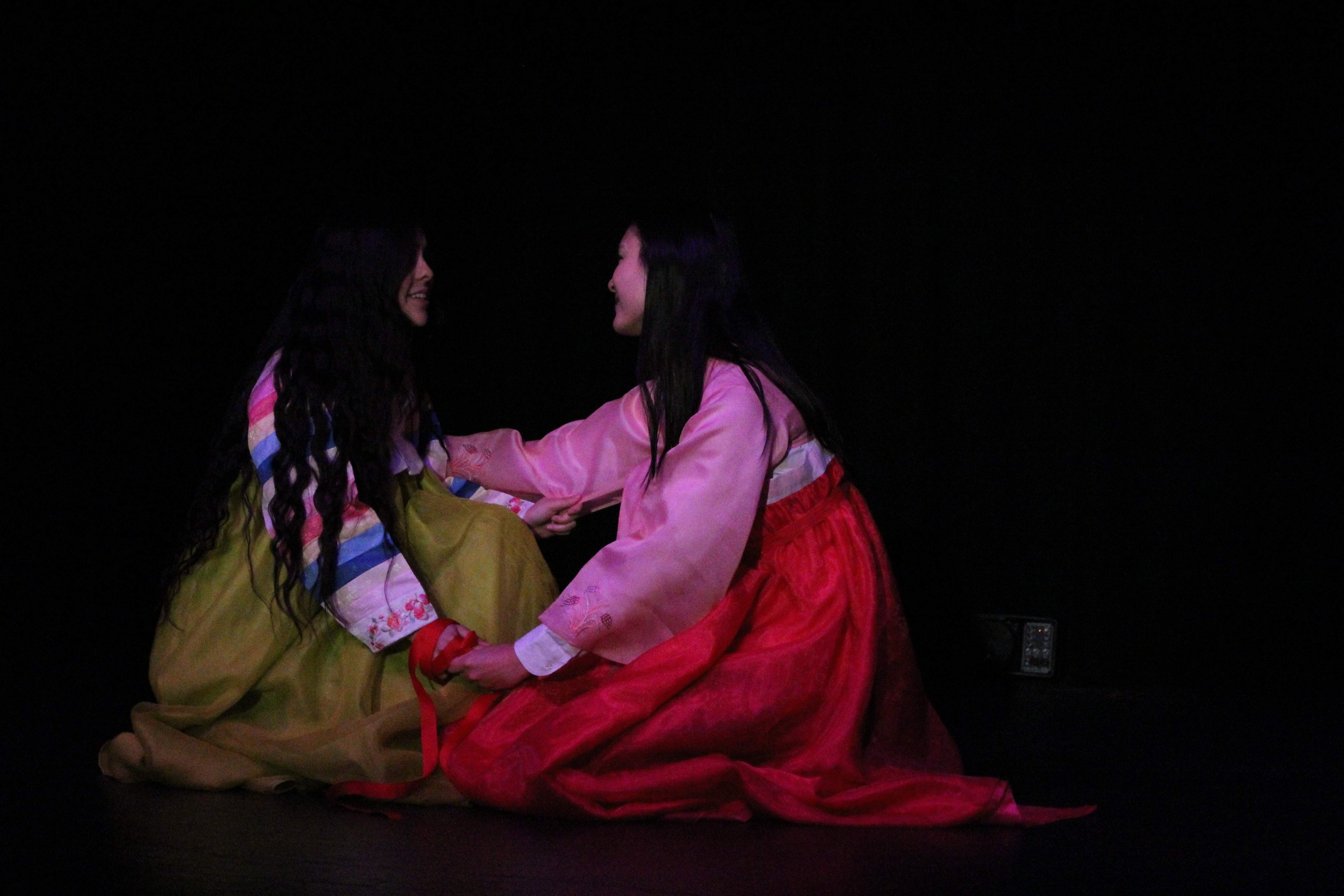I watch a dim blue light hit the Union Ballroom stage. As the blue light shapes the darkness, Suji Lee runs on to the stage, wearing a green hanbok (조선옷); her face red. The girl runs over to the shaman, shrouded in a black cloak.
The shaman looked away as Suji ran over to her. Suji approaches her partially out of breath.
Suji says, “Please Wul Hwa you can’t do this to me! None of you can do this to me! That was my true fate and becoming you isn’t! Please, I just want to be happy!”
Wul Hwa smiles in response and turns to her. She says sarcastically, “Suji, what a nice surprise.” Just as she finishes that statement she turns away, beginning to exit the stage. Wul Hwa had nothing more to say to the doomed girl.
Suji cries out, “No please, don’t go!” Wul Hwa turns around one last time and looks at Suji. Then exits the stage into the backstage corridor. As the shaman exits, Suji falls to her knees and cries.
Another girl, Hebin, walks on to the stage, a red ribbon in her hand. The red thread of fate…
Hebin approaches; she was wearing a pink hanbok. Hebin reaches Suji Lee and starts tying the ribbon around her arm. Suji stops crying and goes to grab the red ribbon, but Hebin does not let go. Suji looks over Hebin and then lifts up her head.
“Hebin! It’s you! It’s always been you!” Suji exclaims. Hebin and Suji meet eye-to-eye before embracing each other in a loving hug.
The lights dim into darkness and the crowd erupts into cheers and screaming. Me and the others in the back smile and hold back laughter as the crowd roared in enjoyment.

Continue reading “GENE『S』EO: The Myriad of Navigating Geneseo’s Binaries [6]”

 restrains their actions and subsequently limits them from all the possibilities they may take. There are many paths and decisions that people can make; if half of those decisions are cut off prematurely because of a fear of discomfort, we would lose half the opportunities we have. This fear of judgement and failure we create is simply a protective barrier keeping us from the opportunity to grow—I don’t discredit fear, as it is a natural feeling, but I believe taking power over our fear of an uncomfortable situation can be empowering. In order to take full advantage of our options, we must seek discomfort.
restrains their actions and subsequently limits them from all the possibilities they may take. There are many paths and decisions that people can make; if half of those decisions are cut off prematurely because of a fear of discomfort, we would lose half the opportunities we have. This fear of judgement and failure we create is simply a protective barrier keeping us from the opportunity to grow—I don’t discredit fear, as it is a natural feeling, but I believe taking power over our fear of an uncomfortable situation can be empowering. In order to take full advantage of our options, we must seek discomfort.